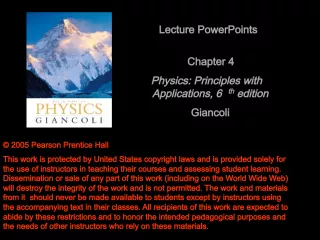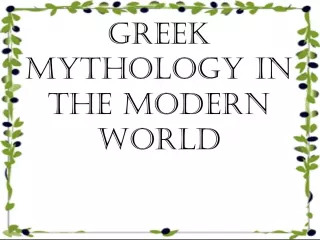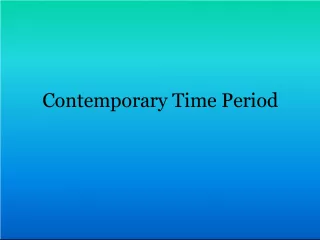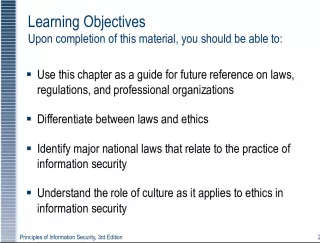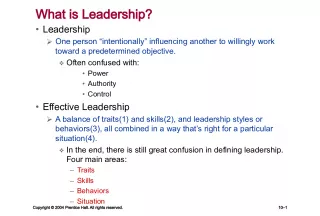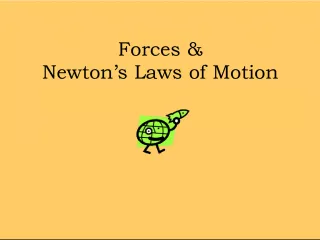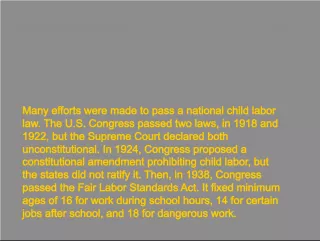Evolution of Copyright Laws: From Statute of Anne to Modern Times
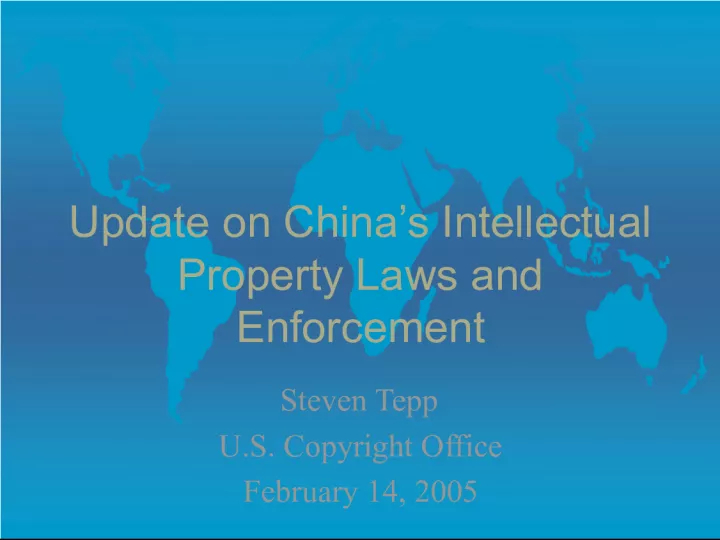

This article provides an update on China's intellectual property laws and enforcement, tracing the historical development of copyright laws from the Statute of Anne in 1710 to the United States' Copyright Act revisions in 1976.
- Uploaded on | 3 Views
-
 eloraina
eloraina
About Evolution of Copyright Laws: From Statute of Anne to Modern Times
PowerPoint presentation about 'Evolution of Copyright Laws: From Statute of Anne to Modern Times'. This presentation describes the topic on This article provides an update on China's intellectual property laws and enforcement, tracing the historical development of copyright laws from the Statute of Anne in 1710 to the United States' Copyright Act revisions in 1976.. The key topics included in this slideshow are China, intellectual property laws, enforcement, copyright, Statute of Anne, Copyright Act revisions,. Download this presentation absolutely free.
Presentation Transcript
1. Update on Chinas Intellectual Property Laws and Enforcement Steven Tepp U.S. Copyright Office February 14, 2005
2. Background The Statute of Anne, widely recognized as the worlds first copyright law, was enacted in 1710.
3. Background The United States enacted its first Copyright Act in 1790, during the First Congress and 14 years after the Revolutionary War. The U.S. has revised its Copyright Act many times, including 1831, 1870, 1909, and 1976.
4. Background Chinas first copyright law was adopted in 1980, approximately 2,200 years after the Qin Dynasty unified China. China adopted major revisions to its copyright law in 1990 and 2001.
5. U.S.-China IPR Relations In 1991, due to a Berne-incompatible law and high levels of piracy, the U.S. named China a Priority Foreign Country under the Special 301 process. The Priority Foreign Country designation can be a precursor to trade sanctions if the situation does not improve.
6. U.S.-China IPR Relations In 1992, the U.S. and China entered into a Memorandum of Understanding. Changes in Chinas copyright law were made later that year and the Special 301 designation was lowered.
7. U.S.-China IPR Relations In 1994, due to very weak enforcement of intellectual property, China was again named a Priority Foreign Country. An agreement was reached in 1995, preventing the imposition of trade sanctions.
8. U.S.-China IPR Relations In 1996, due to Chinas failure to fulfill its 1995 commitments, China was yet again named a Priority Foreign Country. Once again, agreement was reached and trade sanctions were averted.
9. U.S.-China IPR Relations In the course of its negotiations for accession to the WTO, China made various commitments concerning the protection of intellectual property. China became a member of the WTO in December, 2001.
10. U.S.-China IPR Relations The U.S. has continued to send trade delegations to China to urge and assist in improving Chinas protection of intellectual property. The U.S. also offers many technical assistance opportunities for Chinese officials.
11. U.S.-China IPR Relations Nonetheless, China continues to be plagued by piracy. The copyright industries report that piracy rates continue to hover around 90 percent for every type of copyrighted work. They also report that losses from piracy in China have gone up from $850 million in 1994 to over $2.5 billion in 2004.
12. U.S.-China IPR Relations Last year, the levels of piracy in China were once again causing rising trade friction with the U.S. During the Joint Commission on Commerce and Trade, Chinese Vice Premier Wu Yi made several commitments to improve Chinas intellectual property protection.
13. U.S.-China IPR Relations We have not yet seen the realization of all of Wu Yis goals. In that context, last week the International Intellectual Property Alliance and the U.S. Chamber of Commerce called on the U.S. Government to initiate WTO consultations with China concerning intellectual property enforcement. If undertaken, the WTO action could lead to trade sanctions.
14. The Chinese System While Chinas copyright law leaves much to be desired, it is not generally seen as the predominant source of the IPR problem. Inadequate enforcement efforts, marked by low penalties and infrequent criminal prosecutions, not surprisingly fail to prevent or deter piracy.
15. The Chinese System Chinas protection of intellectual property is hindered by a dizzyingly complex set of dueling jurisdictions. Substantive provisions can be found in statutes, administrative implementing regulations, judicial interpretations, as well as internal guidelines of the various enforcement bodies.
16. The Chinese System Enforcement authority is spread across numerous entities, many with both Beijing and provincial offices: National Copyright Administration Public Security Bureau National Anti-Pornography and Piracy Working Group Supreme Peoples Procuratorate General Administration of Press and Publications Customs Bureau
17. The Chinese System Chinas enforcement actions are mostly administrative. The administrative system can result in swifter action. However, the fines are very small. No imprisonment is possible through the administrative enforcement of IPR.
18. The Chinese System Chinas criminal code provides for prosecution of infringers: Article 217. Whoever, for the purpose of reaping profits, has committed one of the following acts of copyright infringement and gains a fairly large amount of illicit income, or when there are other serious circumstances, is to be sentenced to not more than three years of fixed-term imprisonment, criminal detention, and may in addition or exclusively be sentenced to a fine; when the amount of the illicit income is huge or when there are other particularly serious circumstances, he is to be sentenced to not less than three years and not more than seven years of fixed-term imprisonment and a fine: (1) copy and distribute written, musical, movie, televised, and video works; computer software; and other works without the permission of their copyrighters; (2) publish books whose copyrights are exclusively owned by others; (3) duplicate and distribute audiovisual works without the permission of their producers; (4) produce and sell artistic works bearing fake signatures of others. Article 218. Whoever, for the purpose of reaping profits, knowingly sells the duplicate works described in Article 217 of this Law, and gains a huge amount of illicit income, is to be sentenced to not more than three years of fixed- term imprisonment, criminal detention, and may in addition or exclusively be sentenced to a fine.
19. The Chinese System An interpretation of those provisions promulgated by the Supreme Peoples Court in 1998 set thresholds for prosecution under Article 217. Profits from piracy must exceed 50,000 RMB for an individual and 200,000 RMB for a business. The thresholds for the higher penalties were 200,000 and 1,000,000 RMB. The Article 218 thresholds were 100,000 RMB for an individual and 500,000 RMB for a business.
20. The Chinese System VP Wu Yi committed to reduce those thresholds and at the end of last year the SPC issued a new interpretation. The Article 217 thresholds are now 30,000 RMB for individuals and 90,000 RMB for a business. The thresholds for the higher penalties are 150,000 and 450,000 RMB. The Article 218 thresholds are now 100,000 RMB for an individual and 300,000 RMB for a business.
21. The Chinese System The reduced thresholds are an improvement, but do not go as far as had been hoped. Ultimately, the importance of the thresholds is secondary to the willingness of Chinese authorities to prosecute pirates and impose deterrent-level penalties.
22. Sheh-sheh.


